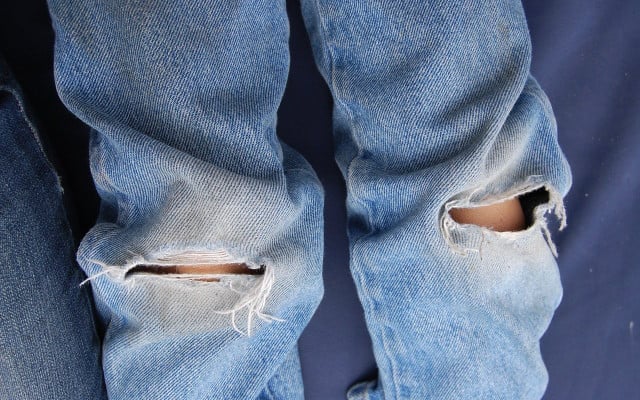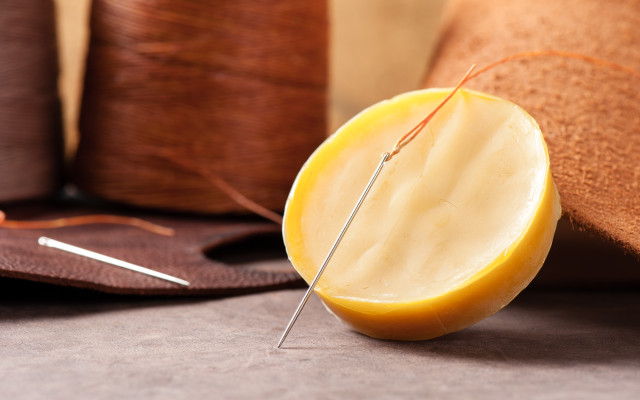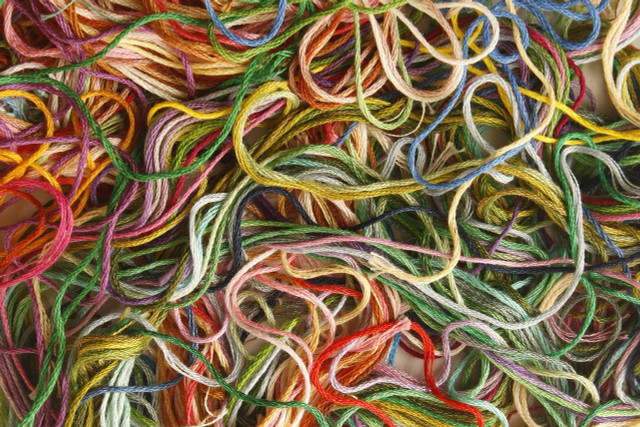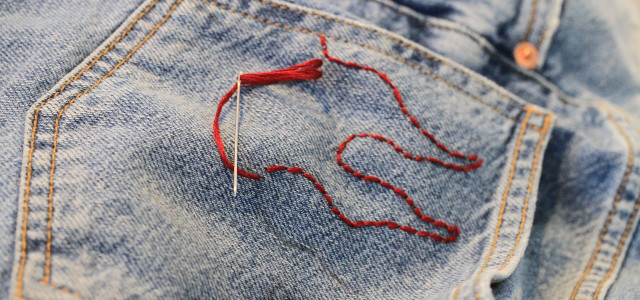Visible mending is a trend that is all about breathing new life into old clothes. We’ll tell you how it works, and everything you need to know to try it out at home.
Visible mending is all about upgrading your old clothes by adding some new pizazz, instead of throwing them away. It’s sustainable, saves resources, easy to learn, and gives you a chance to get creative with your wardrobe.
When there’s a hole or a rip in a piece of clothing, the first reaction of most people is to try to fix it in the least noticeable way possible. Visible mending turns that idea on its head, and instead encourages you to mend the tear in a striking and conspicuous way, using colorful thread, or eye-catching patches with different patterns and motifs.
If you’re intrigued but don’t happen to have any clothes in need of mending, you could always upcycle an old pair of jeans or a sweatshirt by adding some colorful new charm wherever you think it would look best. This way, your old clothes just might become your new favorite things to wear.
Visible Mending Materials and What Else You Need

In principle, there are no limits to what kind of clothes can be improved with visible mending. To start your own project, you don’t need much:
- Depending on what kind of fabric you’re using, you’ll want to choose a different sized needle. When working with more durable fabrics, for example, make sure you’re using a sharp, sturdy needle so that you’ll have as much control over what you’re doing as possible.
- Choose the color of your thread according to your taste. You can choose something that will blend in, or stand out, or even use several different colors.
- You’ll also want to have a washable marker handy, to draw patterns on the fabric that you can later embroider.
Tip: If you’re a beginner, you’ll want to keep in mind that it’s much more difficult to patch a thick, tough material like denim than a thin, flexible material like cotton. If you want to do something especially intricate, it’s best to practice first on something made of thinner material, like a t-shirt.
Visible Mending: How To Do It



If you want to fix a hole in a piece of clothing, simply use visible mending techniques. Patches work particularly well.
- Cut off the frayed ends of the hole.
- Lay your chosen patch inside the piece of clothing so that the pattern can be seen through the hole. (The patch should be slightly bigger than the opening).
- Use needles to attach the patch to the piece of clothing, so that it stays in place.
- Sew around the patch. You can even use differently colored threads, to make it more interesting.
- Don’t forget to knot the thread well when you’re finished, so that your seam can’t come undone.
Using Wax For Stability



Pushing your thread through wax before you start sewing. For this purpose, beeswax tends to work best.
The wax will make stitching much easier: the thread will be reinforced and will move through the material more smoothly, with less resistance. The wax will also keep the thread from fraying or chafing when you’re sewing a sturdier material. This trick is especially helpful to beginners, who want to start a visible mending project but have little experience.
Tip: Beeswax is sometimes available at drugstores in the cosmetics section, or at craft stores. If you can’t find any, you can also order it online on Amazon**
Visible Mending: Simple or Complex Patterns



If you want to keep your visible mending creation simple and classic, you can consider yourself finished after the patch is sewn on. But if you want to take it up a notch and let your creative side run wild, try sewing different patterns around the edges of the patch, to make your piece of clothing even more exceptional.
There are a variety of different techniques that you can use to do this, like the cross-stitch or the backstitch, but you could also just use your washable marker to trace a pattern, and then follow that line with your regular stitches.
This article was written by Alina Zach and translated from German to English by Christie Sacco. You can read the original here: Visible Mending: So kannst du alte Kleidung aufwerten
** Links to retailers marked with ** or underlined orange are partially partner links: If you buy here, you actively support Utopia.org, because we will receive a small part of the sales proceeds. More info.Do you like this post?






